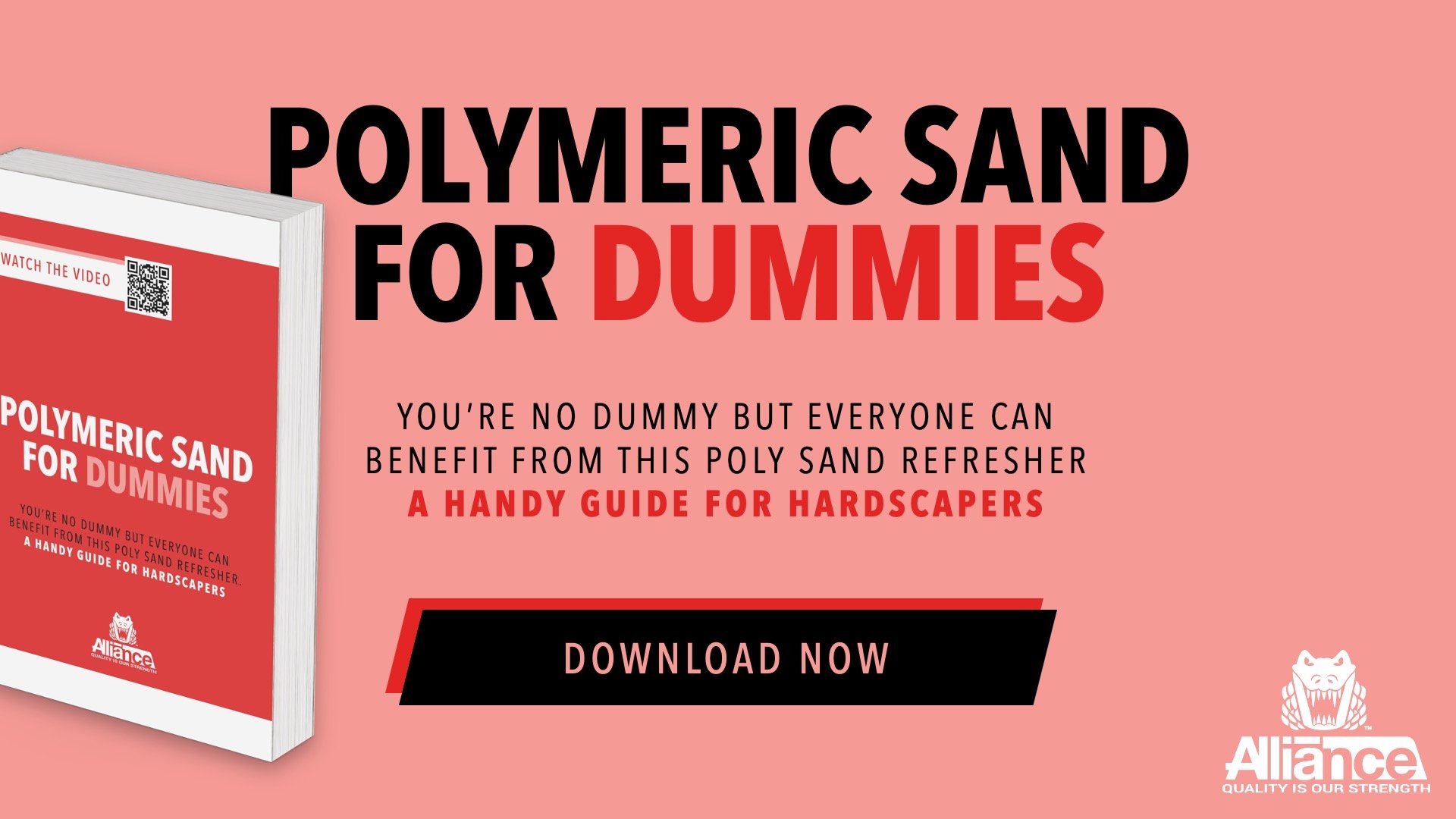TOP 5 REASONS FOR POLYMERIC SAND EPIC FAILS
Polymeric sand has come quite a long way over the decades. Its main function is to improve interlock while creating a highly durable yet resilient joint. Improper installation, however, can lead to a variety of different problems, or epic fails if you will. In this blog post, we’ll discuss the top five reasons we’ve seen for epic polymeric sand failure.
For starters, the installation of polymeric sand can be a DIY project. However, it’s imperative to use the right tools and fully educate yourself on the product you’re using. Missing a single step can be detrimental to the success of your installation. If you diligently follow the instructions set forth by the manufacturer, you should be in good shape! Cutting corners can (and most likely will) lead to a project FAIL.
Epic Fail #1: Too much or too little watering.
A polymeric sand installation requires the use of a controlled and methodical watering technique. Using too much water can cause the sand to wash out of the joints. On the contrary, using too little can result in the product not setting up properly. Hazing can also occur if sand residue isn’t fully washed off the surface of the pavers. Be sure to check out our blog post on Watering Polymeric Sand before starting your next project.
Epic Fail #2: Improper weather conditions.
We simply can’t reiterate this enough: check the weather before getting started! Time and time again we see polymeric sand failures arise because of what the weather was like at the time of installation. Be sure to thoroughly read the manufacturer’s instructions for information on what temperatures the product should be installed in. Also, excessive humidity and moisture can devastate a project so schedule your work when there’s no rain in the forecast.
Epic Fail #3: Topping.
Remember how we mentioned cutting corners at the beginning of this blog post? Well topping is an example of this and is considered a big no-no when it comes to polymeric sand installation. Topping basically refers to filling the joints with regular sand and then topping them off with polymeric sand. We always recommend filling the entire joint depth with a single product to ensure a successful installation. Without a firm and densely packed base, water and ice can work their way into the joint and cause the material on top to fail (not to mention, it’s next to impossible to evenly fill up half a joint with one material). If you are installing polymeric sand in an existing job, it's important to uniformly remove at least an inch of the joint depth before reinstalling polymeric sand.
Epic Fail #4: Incorrect sand for the project.
There are many different flavors of polymeric sand on the market. And choosing the right product for your particular application is critical. Be sure to carefully read the manufacturer’s guidelines and recommended applications prior to purchasing polymeric sand for your project. The performance of the product will depend on it!
Epic Fail #5: Using the wrong tools.
Jumping up and down on the surface to even out the sand = not appropriate. Holding your thumb over the hose during watering = not appropriate. Blowing off residue with a hairdryer = also not appropriate. Make sure you have all of the necessary tools at the ready before starting your polymeric sand installation. Using the right tools for the job will make a world of difference and help you avoid epic product failures down the line.
For a quick list of what you’ll need, read 5 Tools Needed For A Polymeric Sand Installation.


